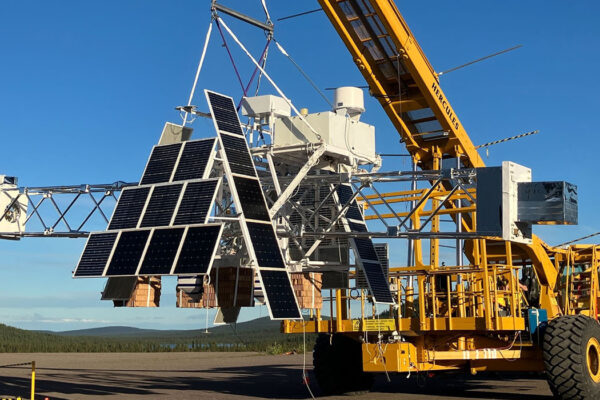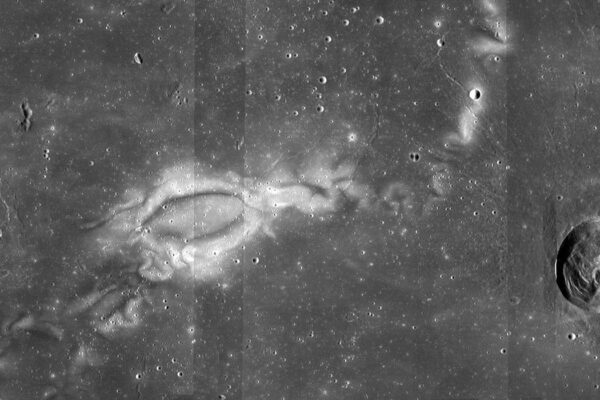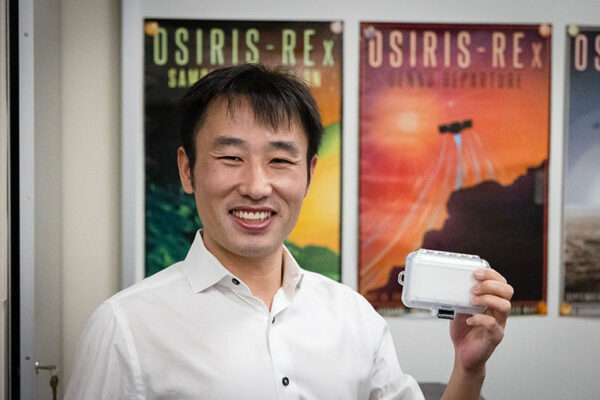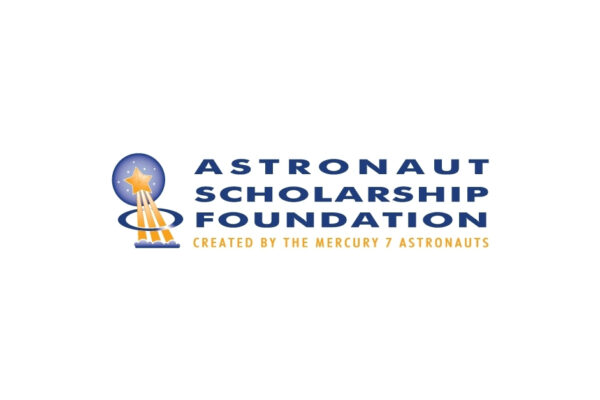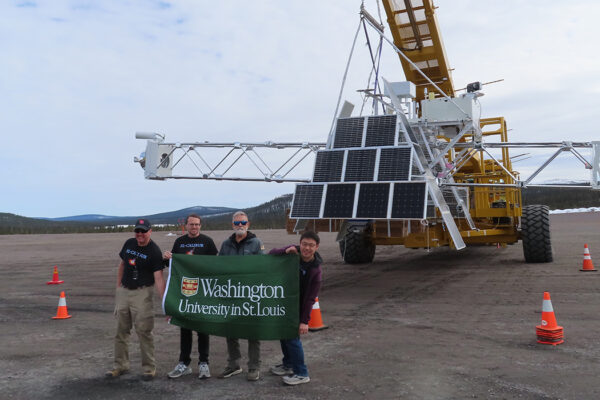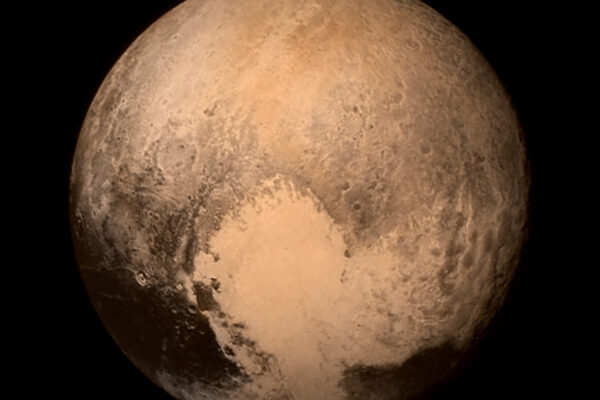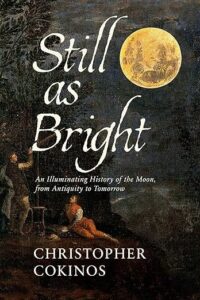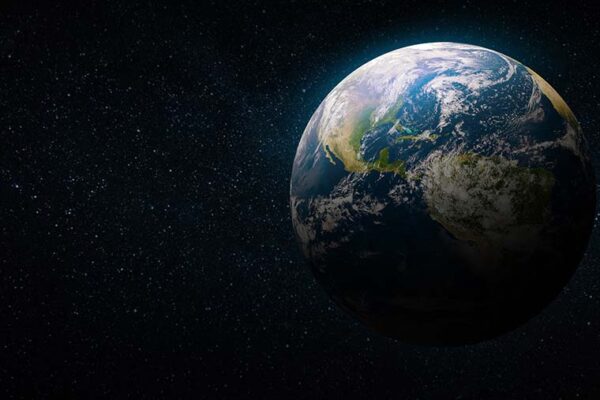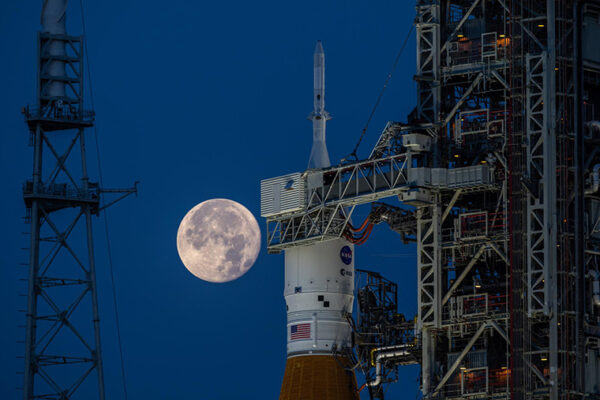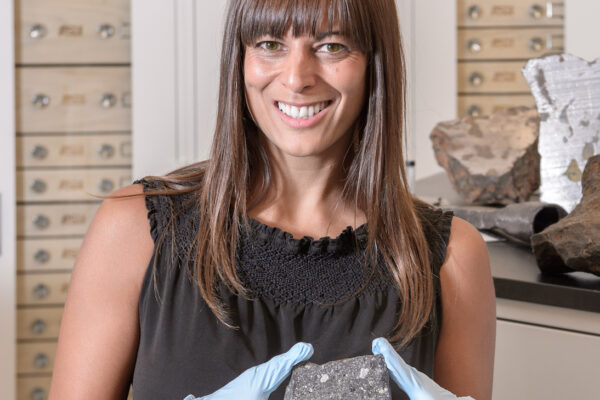XL-Calibur telescope launched to study black holes
Scientists from Washington University in St. Louis have launched a balloon-borne telescope to unlock the secrets of astrophysical black holes and neutron stars, some of the most extreme objects in the universe. XL-Calibur launched July 9.
Moon ‘swirls’ could be magnetized by unseen magmas
In a laboratory setting, experimental petrologists at Washington University recreated the magnetizing reactions that could be causing the mysterious, light-colored features on the Moon’s surface, known as lunar swirls.
Surprising phosphate finding in asteroid sample
Washington University scientists, including Kun Wang in Arts & Sciences, are part of a team that reported that near-Earth asteroid Bennu’s dust is rich in carbon and nitrogen, as well as organic compounds, all of which are essential components for life as we know it.
Collado named an Astronaut Scholar
Tomás Collado, a rising senior studying mechanical engineering at the McKelvey School of Engineering, has been named an Astronaut Scholar, one of the nation’s most prestigious STEM fellowships.
XL-Calibur telescope set for balloon flight from Arctic Circle
Scientists from Washington University in St. Louis are preparing to launch a balloon-borne telescope to unlock the secrets of astrophysical black holes and neutron stars. The telescope known as XL-Calibur could be launched from Esrange Space Center in Sweden as early as Wednesday, May 29.
Peering into Pluto’s ocean
Graduate student Alex Nguyen in Arts & Sciences calculated the depth and density of the solar system’s most mysterious and remote body of water.
Still as Bright
An Illuminating History of the Moon, From Antiquity to Tomorrow
In the luminously told Still As Bright, the story of the Moon traverses time and space, rendering a range of human experiences—from the beliefs of ancient cultures to the science of Galileo’s telescopic discoveries, from the obsessions of colorful 19th century “selenographers” to the astronauts of Apollo and, now, Artemis. Still As Bright also traces […]
Astronomers share climate-friendly meeting solutions
Carbon emissions associated with air travel to professional conferences make up a sizable fraction of the emissions produced by researchers in academia. Andrea Gokus, a McDonnell Center postdoctoral fellow in Arts & Sciences, is advocating for astronomers and others to reduce those emissions.
WashU to manage data for instrument on Artemis moon mission
Washington University in St. Louis will manage data processing and dissemination for the Lunar Environment Monitoring Station, one of the first three potential payloads selected for Artemis III, NASA’s mission which will return astronauts to the moon for the first time in more than 50 years.
Interplanetary rockstar
Meenakshi Wadhwa, director of the School of Earth and Space Exploration at Arizona State University, has built a formidable career studying our solar system.
Older Stories
